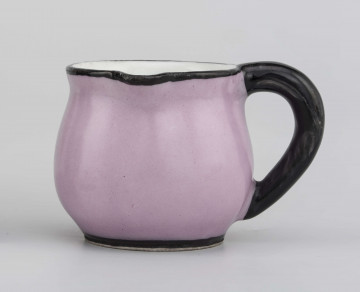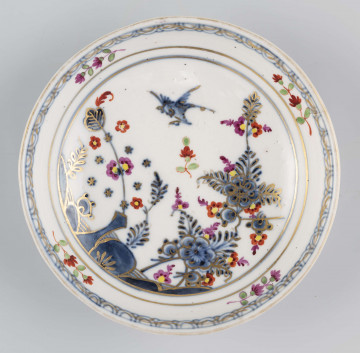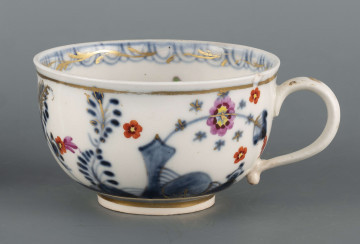
Creamer jug
1825 — 1835
National Museum in Lublin
Part of the collection: European porcelain
Eastern designs were imitated there, both in the form and decoration of the vessels, in the early days of the Royal Saxon Porcelain Manufactory in Meissen (founded 1710). It resulted in a set of exotic motifs which may seem bizarre until one reads the meanings hidden in them. For Europeans, these patterns were only decorations intended to make the vessels look like precious Chinese porcelain, but they carried deep symbolic meanings in the Chinese tradition. A flying heron with colourfully feathered wings is a symbol of longevity. The floral twigs on the surface of the plate are decorative, but they also have a hidden meaning, mainly because one can see peonies among them. A peony bush in bloom is a sign of wealth, prosperity and happiness. At the bottom of the plate, next to the bush, there is a beetle, probably a cockchafer, which symbolises physical strength and mental fortitude. Most unusual of all is the bizarre creature described in the workshop's documents as 'a Korean lion', 'a green dragon' because of its green back, or it is a 'cross between a dragon and a tiger'. In the European tradition, the dragon is a fearsome and frightening monster. In the East, on the contrary, the powerful, winged creature with massive claws is a symbol of the power to bring happiness. It is also one of the most important beings in Chinese mythology, treated in Western culture as the national symbol of China. The small flowers and insects scattered on the surface of the plate are free from symbolism, cleverly and aesthetically hiding imperfections in the enamel and accidental spots.
Barbara Czajkowska
Author / creator
Dimensions
cały obiekt: diameter: 23,8 cm
Object type
plate
Technique
overglaze paints
Material
porcelain
Creation time / dating
Creation / finding place
Owner
The National Museum in Lublin
Identification number
Location / status

1825 — 1835
National Museum in Lublin

1890 — 1800
National Museum in Lublin

1790 — 1800
National Museum in Lublin
DISCOVER this TOPIC
Museum of King Jan III's Palace at Wilanów
DISCOVER this PATH
Educational path